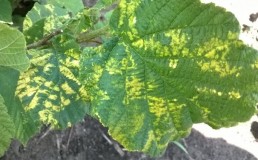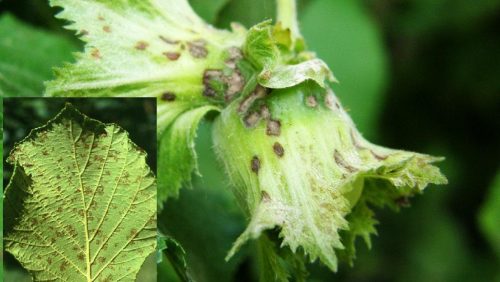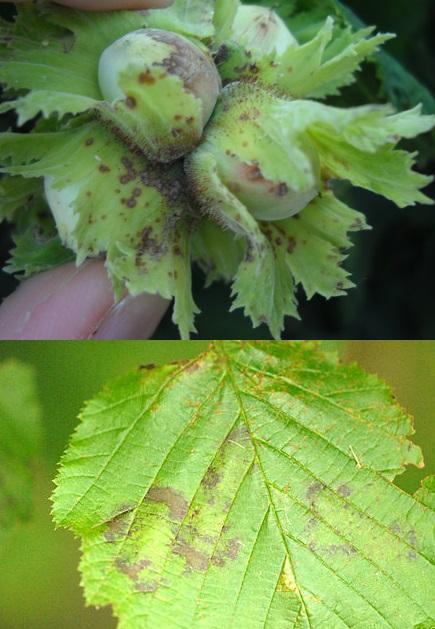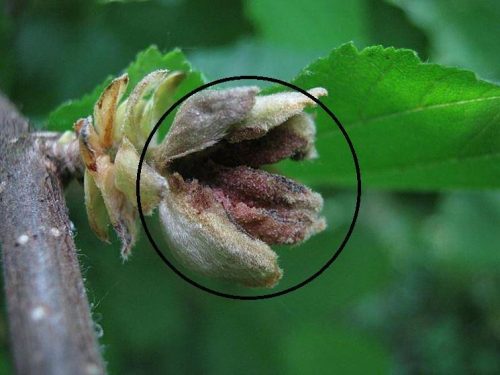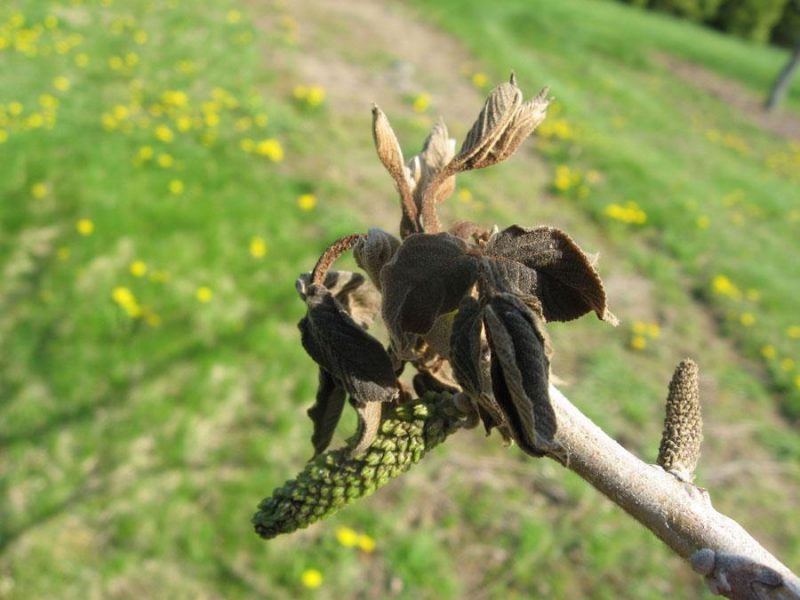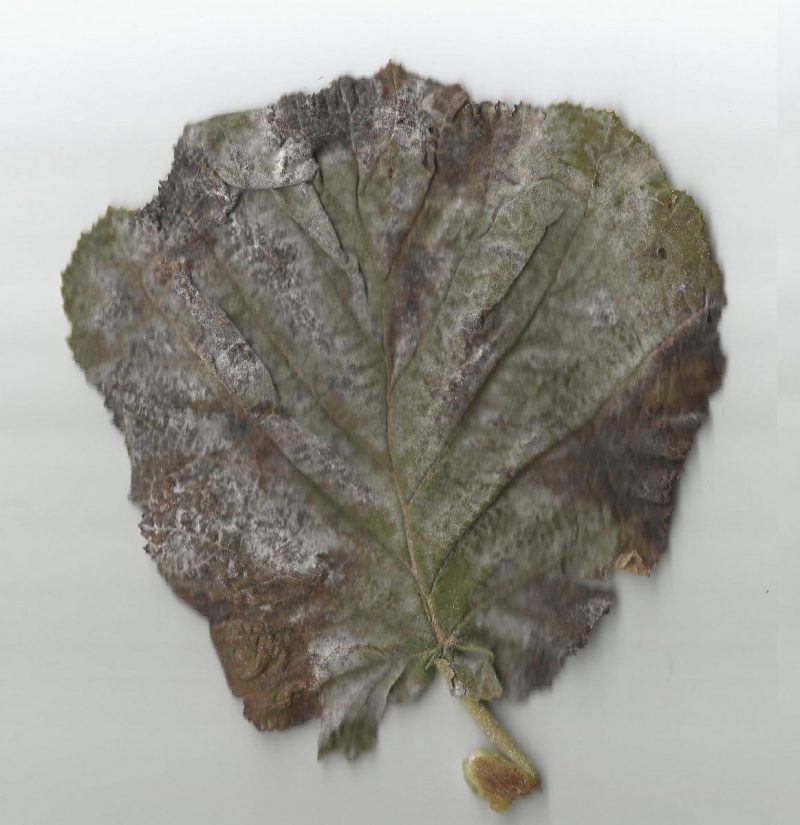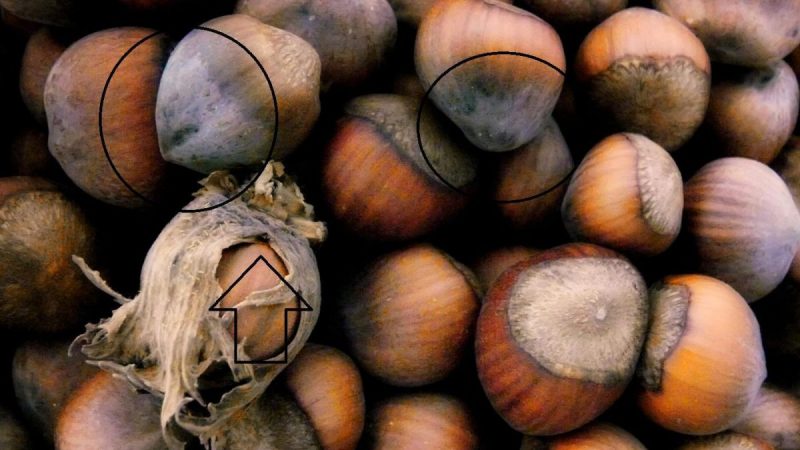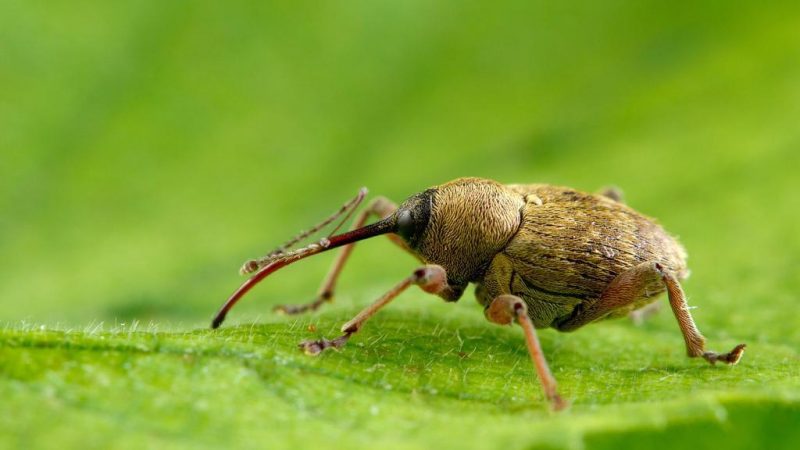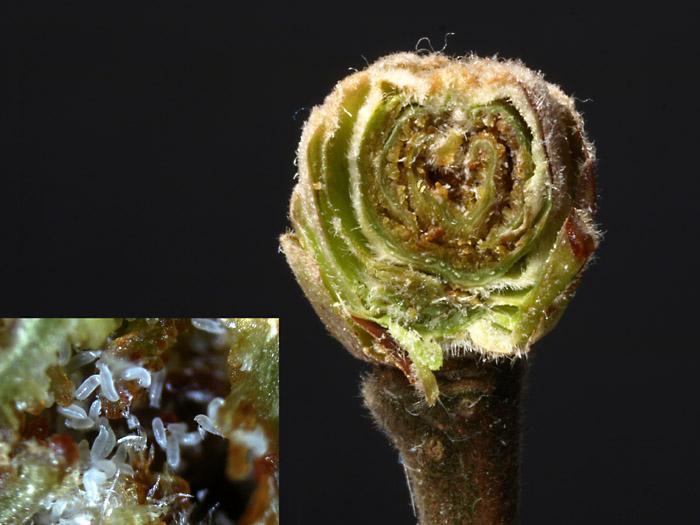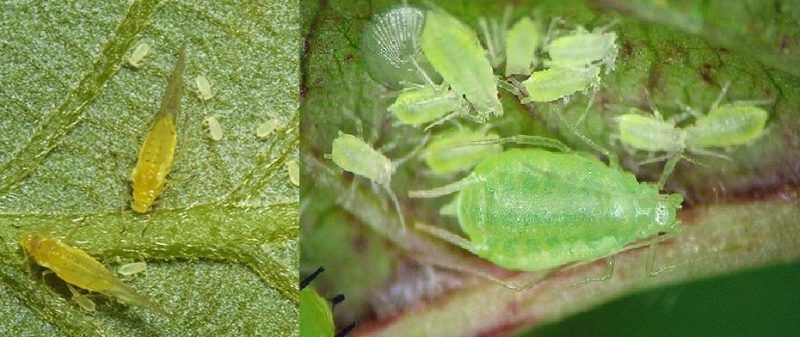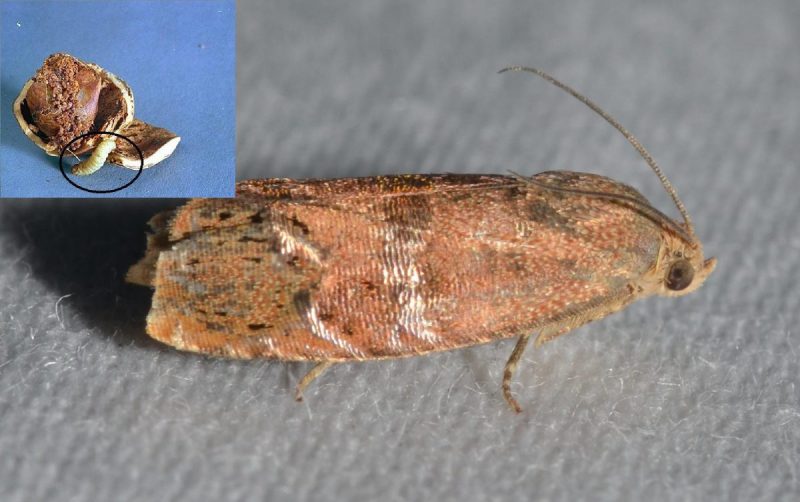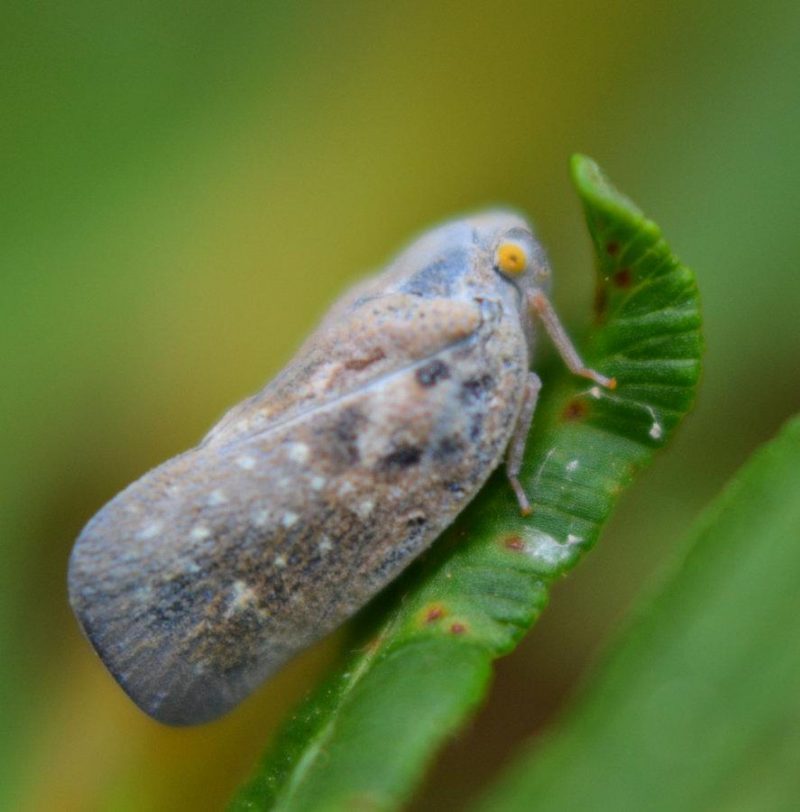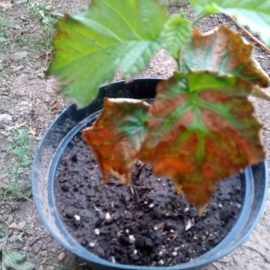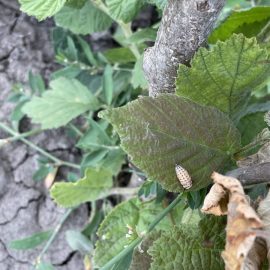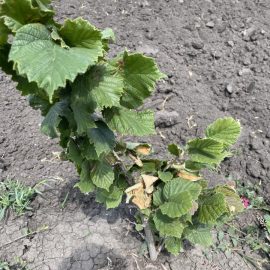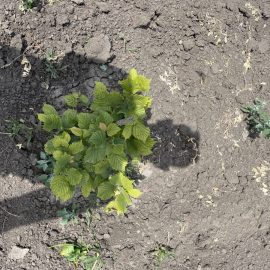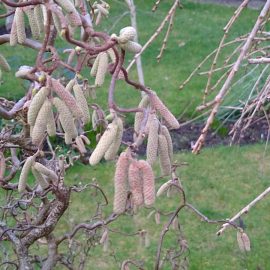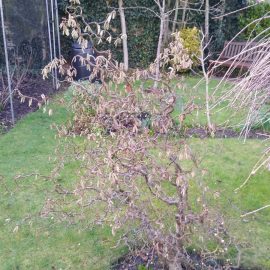Hazel treatments, pest and disease control
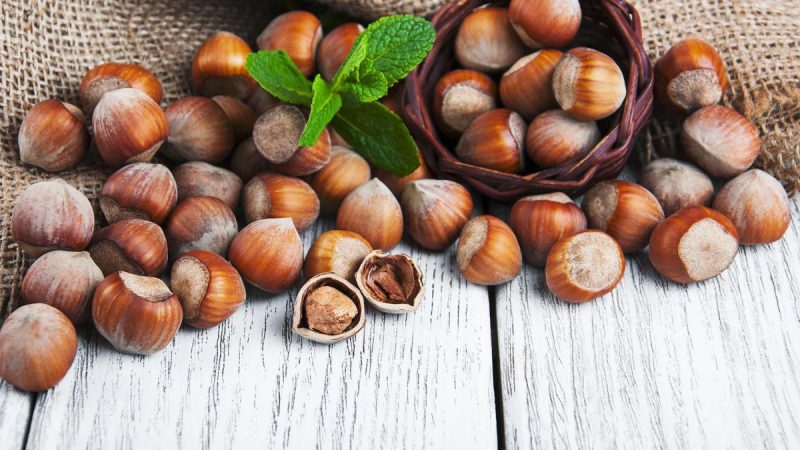
The hazel (Corylus avellana) is a fruit-bearing shrub that grows spontaneously at the edge of deciduous forests. It is widespread in many geographical areas but prefers hilly areas. Hazel plants are frost-resistant but sensitive to excess moisture. It tolerates semi-shaded conditions and makes good use of all types of soil.
The hazel is a rustic shrub, which can reach heights of up to 5 meters. The fruit is an achene. Hazelnuts are considered true nutrient bombs, containing fats, vitamins (B, E, A), calcium, phosphorus, magnesium, potassium, iron, copper, sulfur, and sodium.
The main diseases of hazel
VIRUSES
Apple mosaic virus
The most common form of attack is manifested on the leaves as irregular yellow spots. The attack is usually seen on one side of the leaves. If temperatures are between 18 and 20 °C, the spots turn brown. Following the attack, the leaves fall off, the shoots do not develop normally, consequently, production decreases and the trees become weaker. The virus is transmitted by grafting, pollen, infected seeds, and in the nursery by root contact.
Prevention and control measures:
- using healthy grafts and rootstocks;
- removing affected plants;
- planting resistant varieties.
BACTERIOSIS
Bacterial blight of hazel (Xanthomonas campestris pv. Corylina)
It is a very dangerous disease in hazelnut plantations because it attacks the buds, leaves, and shoots. The buds turn brown and stop growing, the shoots dry out, and lesions appear on the surface of the branches that can lead to cracking. The bacterial infection is transmitted by bacterial exudate carried by rain or wind droplets or by tools when carrying out care work. Black spots appear on the leaves, arranged in the space between the veins, which merge and affect the whole leaf.
Prevention and control measures:
- gathering and burning fallen fruits and leaves.
MYCOSIS
Sphaceloma coryli
This fungus attacks the fruits, leaves, and flowers of the shrub. Black necrotic spots appear on the leaves and in severe cases, the leaf veins turn black. Small lesions appear on the flowers, leading to their deformation and abortion. Blackish-brown necrotic spots appear on the fruit which fall prematurely as a result of the attack.
Prevention and control measures:
- burning or burying affected leaves.
Anthracnose (Gloeosporium coryli)
This disease attacks flowering and vegetative buds. Brown spots appear on the buds, covering the entire surface. After the attack, the buds get destroyed and the production decreases significantly.
Brown rot (Monilinia sp.)
This disease attacks all the aerial organs of the shrubs, causing significant damage in cold and rainy years. Affected leaves hang down without falling off, flowers brown and wither, and branches bend into a hook shape. Young fruit shrivels, browns, and falls massively. The fungus overwinters on the attacked fruit and in the bark of the branches.
Prevention and control measures:
- pruning the affected branches to the healthy area and covering the wounds with wound sealer.
Recommended products
-
You can find products on a different store
Change Store -
You can find products on a different store
Change Store -
You can find products on a different store
Change Store -
You can find products on a different store
Change Store -
You can find products on a different store
Change Store -
You can find products on a different store
Change Store -
You can find products on a different store
Change Store -
You can find products on a different store
Change Store -
You can find products on a different store
Change Store -
You can find products on a different store
Change Store -
You can find products on a different store
Change Store -
You can find products on a different store
Change Store -
You can find products on a different store
Change Store -
You can find products on a different store
Change Store -
You can find products on a different store
Change Store -
You can find products on a different store
Change Store -
You can find products on a different store
Change Store -
You can find products on a different store
Change Store -
You can find products on a different store
Change Store -
You can find products on a different store
Change Store -
You can find products on a different store
Change Store -
You can find products on a different store
Change Store -
You can find products on a different store
Change Store -
You can find products on a different store
Change Store
Recommended products
-
You can find products on a different store
Change Store -
You can find products on a different store
Change Store -
You can find products on a different store
Change Store -
You can find products on a different store
Change Store -
You can find products on a different store
Change Store -
You can find products on a different store
Change Store -
You can find products on a different store
Change Store -
You can find products on a different store
Change Store -
You can find products on a different store
Change Store -
You can find products on a different store
Change Store -
You can find products on a different store
Change Store -
You can find products on a different store
Change Store -
You can find products on a different store
Change Store -
You can find products on a different store
Change Store -
You can find products on a different store
Change Store -
You can find products on a different store
Change Store -
You can find products on a different store
Change Store -
You can find products on a different store
Change Store -
You can find products on a different store
Change Store -
You can find products on a different store
Change Store -
You can find products on a different store
Change Store -
You can find products on a different store
Change Store -
You can find products on a different store
Change Store -
You can find products on a different store
Change Store
Powdery mildew of hazel (Phyllactinia corylea)
The attack appears on the leaves as white spots, which spread and cover the entire leaf. As the disease progresses, the mycelium becomes greyish and dusty, and the attacked tissues shrivel and dry out. The fungus also attacks young fruit, which become covered with white mycelial fuzz and then crack and rot.
Prevention and control measures:
- growing resistant varieties;
- destroying the attacked shoots, leaves, and fruits (by burning).
Gray mold (Botrytis cinerea)
The fungus appears in conditions of high humidity and low light and can have a severe impact on yield, even after harvest. Symptoms of this fungus can be seen on the aerial organs of the shrub as areas that turn brown and become covered with a greyish fuzz representing the fungus fructifications. The fungus lives on plant debris on the soil surface and its spores are carried to healthy plants by air drafts and water droplets.
Prevention and control measures:
- gathering and destroying plant debris after harvest.
The main pests of hazel
Hazelnut weevil (Balaninus nucum)
It is the main pest of the hazelnut, the adults feeding on the young leaves and fruit coat. Females lay their eggs in the young fruit, making an incision with the rostrum. After hatching, the larvae consume the contents of the fruit, then emerge from the fruit and retreat into the soil.
Control measures:
- superficial soil mobilisation.
Hazelnut gall mite (Phytoptus avellanae)
This pest is present in all hazelnut plantations, overwintering inside the attacked buds. Following the attack, the buds become deformed and no longer develop normally.
Aphids (Corylobium avellanae, Myzocallis coryli)
Corylobium avellanae is known as the large hazel aphid, while the common name of Myzocallis coryli is the hazel aphid or the filbert aphid. These species colonize the lower part of the leaves and the fresh growths (shoots). The attacked shrubs have small vegetative growths, the fruit buds do not differentiate, and the existing fruits remain small. Thus, fruit production is strongly affected. Aphids can also transmit viruses.
Cydia sp.
They are polyphagous insects that attack several species of fruit trees and shrubs, including hazel. They hibernate in the larval stage in spaces sheltered from the weather (bark cracks, soil, leaves, etc.) The females lay their eggs on or near the fruit and the larvae enter the fruit where they consume the seeds.
Citrus flatid planthopper (Metcalfa pruinosa)
It is a polyphagous species that attacks vines, trees, shrubs, and fruit trees. It develops one generation per year and overwinters in the egg stage inside the branches of attacked plants. Adults and larvae feed on the plant sap, inhibiting plant growth and spreading numerous diseases. Fighting this species is very difficult because of the waxy layer covering the insect’s body. For this reason, it can quite easily be confused with the woolly apple aphid (Eriosoma lanigerum).














































































































































































































































































































































































































































